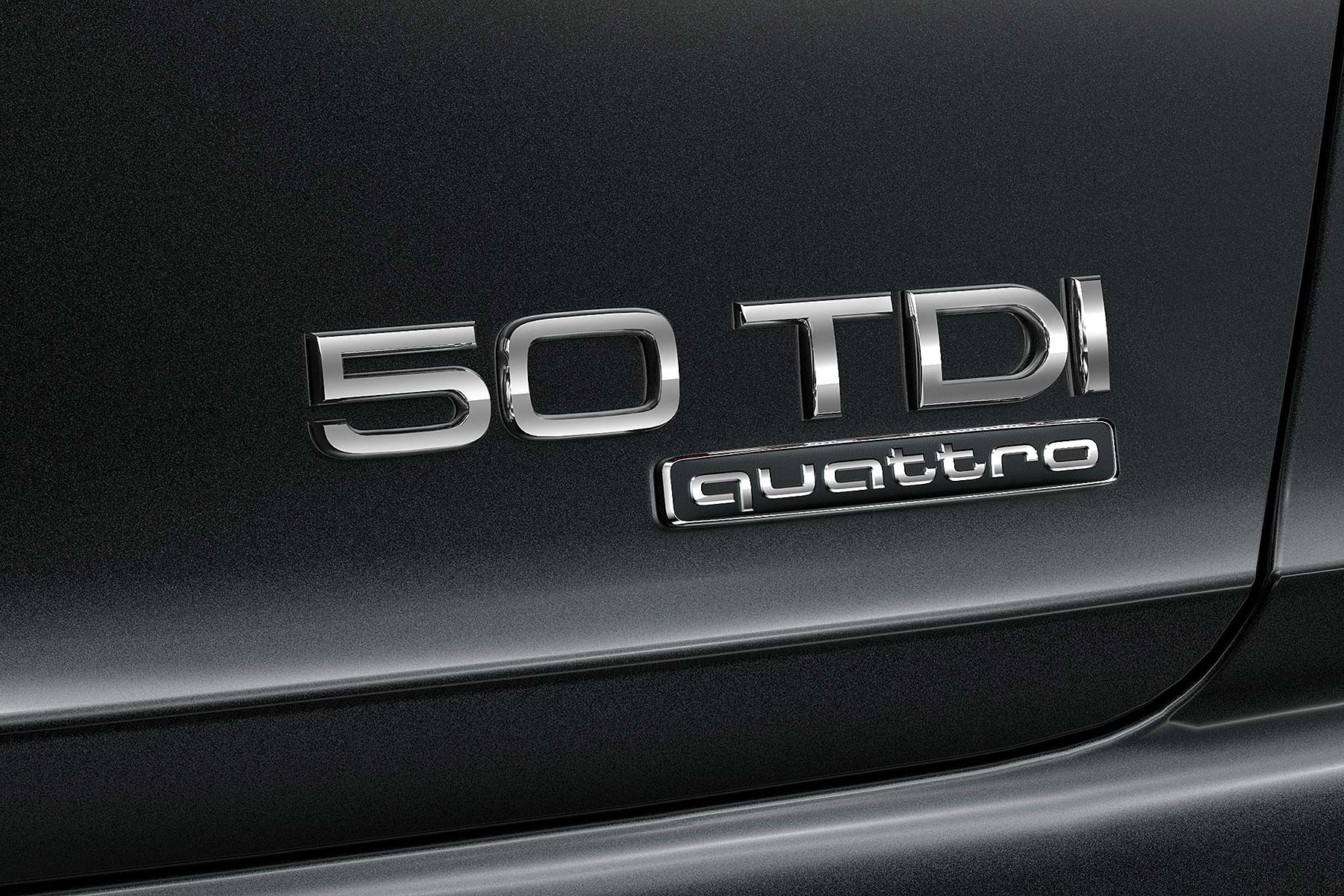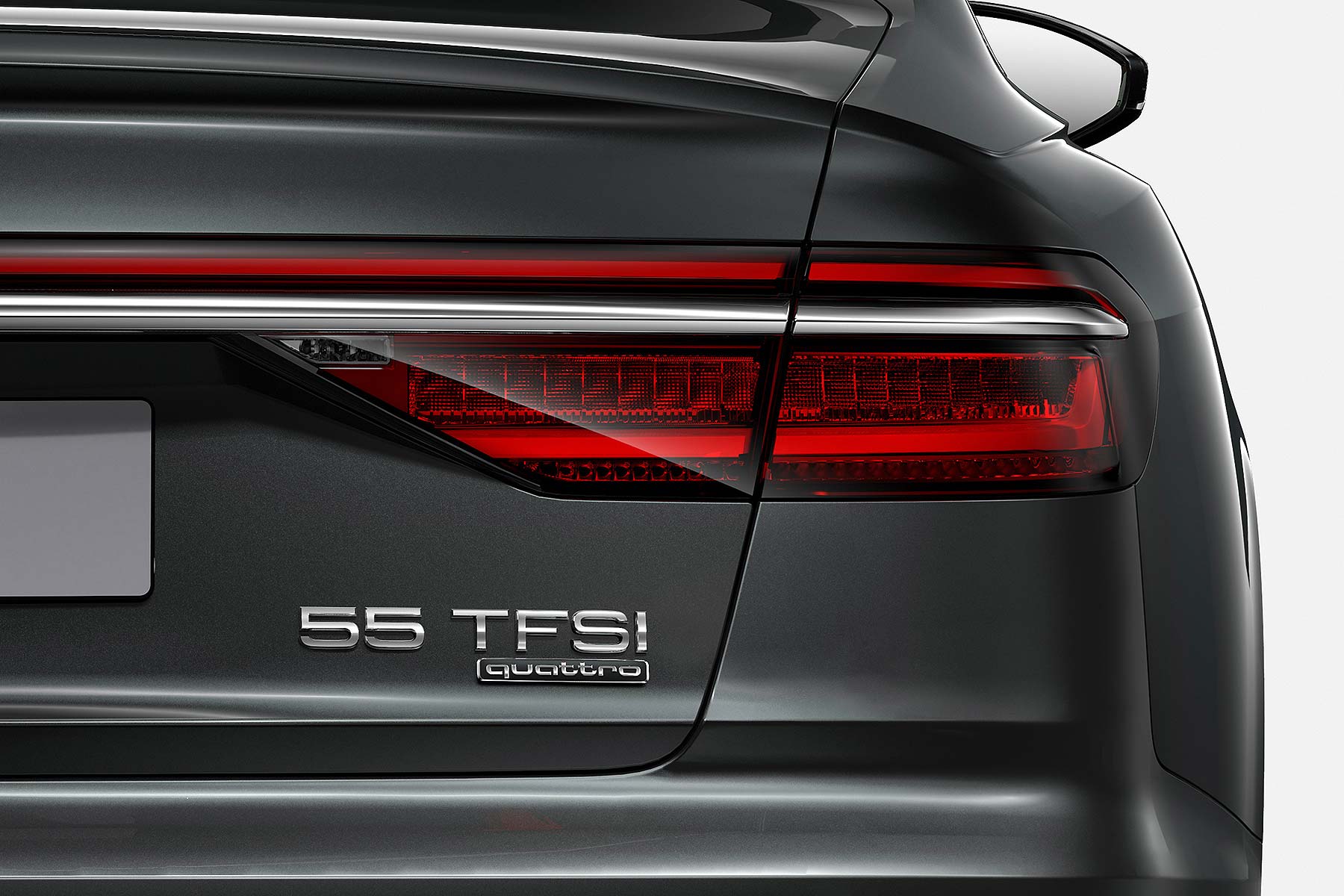 All Audis now feature rear badges that depict the power output of their powertrain – made up of numbers that refer to the output of the drive system and its position within the Audi model hierarchy. The firm calls them model power badges.
All Audis now feature rear badges that depict the power output of their powertrain – made up of numbers that refer to the output of the drive system and its position within the Audi model hierarchy. The firm calls them model power badges.
The designations will be standardised across all drive types – petrol, diesel, hybrid and electric – and will comprise a two-number combination.
Basically, a lower number means lower power.
However, the numbers won’t reference the car’s exact power, but the output range within which it sits. For example, ‘30’ will be used on cars producing between 81 to 96kW (110 to 130hp); ‘45’ will be used on cars producing between 169 and 185kW (that’s 230 to 250hp).

The top badge will be ’70’, for cars producing more than 400kW (upwards of 545hp). All badges increase in increments of five; Audi offers examples such as the Q2 30 TFSI and Q7 50 TDI, as well as the A8 55 TFSI pictured here.
Do not confuse Audi’s power badges with, for example, the similar-sounding system used by Tesla. A Model S 75 has a 75kWh battery, and a Model S 100 has a 100kWh battery: the Audi system is a more arbitrary hierarchy that doesn’t directly reference engine power or electric output.
Why does Audi use power badges?
Insisting it’s a “clearly discernible hierarchy”, Audi says it is using power badges because engine size is no longer a good way to judge the relative status of a car within its range – something that will be further shaken up by the onset of EVs.
“As alternative drive technologies become increasingly relevant, engine displacement as a performance attribute is becoming less important to our customers,” said Dr. Dietmar Voggenreiter, Board of Management Member for Sales and Marketing at Audi.
“The clarity and logic of structuring the designations according to power output makes it possible to distinguish between the various performance levels.” So there is a replacement for displacement after all.
Audi S, RS and R8 models will not feature the power designation badges.
Audi power badges: a quick guide
- 30: 81 – 91kW (110 – 130hp)
- 35: 110 – 120kW (150 – 163hp)
- 40: 125 – 150kW (170 – 205hp)
- 45: 169 – 185kW (230 – 250hp)
- 50: 210 – 230kW (285 – 313hp)
- 55: 245 – 275kW (333 – 375hp)
- 60: 320 – 340kW (435 – 463hp)
- 70: 400kW+ (545hp+)